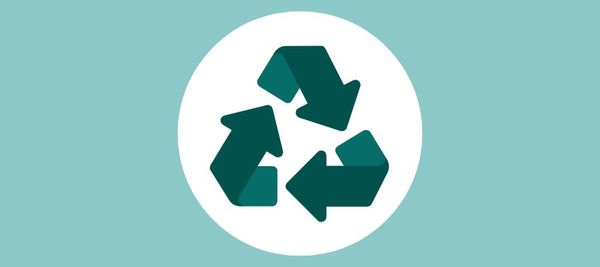Reduce, reuse, recycle. We are all familiar with these three words, but often tend to focus only on the ‘recycle’. While recycling is a more sustainable alternative than throwing everything away, it is not the be-all-end-all to saving our planet and should only be used when there are no other alternatives.
To reach climate goals and to ensure our planet will be here for future generations, we need to go a step further and put more emphasis on the other two words in this phrase – reduce and reuse. This is where the Circular Economy comes in.
Why is the Circular Economy a better approach than recycling? Recycling follows a linear path – resources are extracted, products are made, purchased and used by the consumer, and then disposed of. As recycling only truly begins at this final stage, products are never made with the intention of increasing in value or being preserved.
Let’s take the example of the plastic water bottle. After drinking your bottle of water, you believe you are being environmentally conscious by throwing it into the recycling bin. However, the reality is, instead of being upcycled, this bottle is really being downcycled and losing value over time.
Most plastic bottles are made from a resin called Polyethylene terephthalate (PET). PET is one of the most valuable types of plastic, which also makes it the most difficult to recycle. To turn a used PET bottle into a fresh one often requires adding new plastic into the mix. Most of the time, however, recycled PET bottles are more commonly downcycled into wood or fiber replacements – that pair of jeans you are wearing.

So, despite what the recycling logo might claim – unlimited circular use – this loop would more accurately be depicted as a one-way arrow. Each time a product is recycled, it loses value, until eventually it is no longer usable and thrown away.
A recent report by the Organisation for Economic Co-operation and Development found that since 2000, the number of metric tons of plastic used worldwide had nearly doubled to 460 million metric tons in 2019. Out of these 460 million metric tons, less than 10% was recycled.
Video: What Are the Limits to Recycling?

The Circular Economy differs from recycling in that from the very beginning products are made to last several lifecycles. In an ideally designed Circular Economy, recycling would be avoided completely. Products would be designed from the start to be reused, repaired, and remanufactured. In fact, this design stage already determines 80% of environmental impacts.
“In a properly built circular economy, one should rather focus on avoiding the recycling stage at all costs. It may sound straightforward, but preventing waste from being created in the first place is the only realistic strategy.”
World Economic Forum
Examples of circularity already in use include travel alternatives like carsharing, subscription-based children’s clothing, and the world’s first biodegradable beer bottle. Circular trends such as these place more responsibility on the producer, incentivizing them to design products that are of more durable, longer-lasting quality or made of materials that can be reused.
Read more on the Circular Economy here: Everything You Need to Know About the Circular Economy
The concept of reusing is not new. In fact, it has been around since the beginning of time. However, the narrative that recycling and managing waste will save us from climate change has for too long masked the real solution towards circularity: We need to prevent waste from ever being created to begin with.
While the Circular Economy is gaining traction, as a society, we are far from where we need to be. The Circularity Gap Report 2023 recently revealed that, at current, the global economy is only 7.2% circular. We can talk the talk, but real change will happen when we all walk the walk together – sharing strategies and communicating what has worked and what hasn’t with one another. We can’t do it alone.
Video: Explaining the Circular Economy and How Society Can Re-think Progress

ABOUT
CIRCULAZE, an initiative launched by business network CURAZE, was started to connect pioneers in sustainable business management and thought leaders to form a network together with the most relevant start- and scale-ups in the field of the Circular Economy. The goal of the community is to establish a powerful ecosystem, to exchange good practices, and inspire each other on the path to even more sustainable companies. Our motto: Can’t Do It Alone.
CIRCULAZE is made possible through the friendly support of our amazing partners: DB Cargo, ODDO BHF, Otto Krahn New Business, 4P Capital, Knauf, Capgemini Invent, Jokey, SBC Hamburg, Payback, and Fressnapf.
